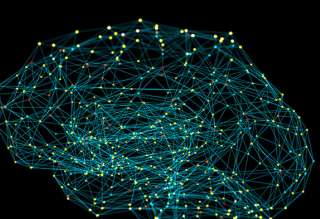- Our Story
- Publications & Resources
- Publications & Resources
- Publications
- IEEE Signal Processing Magazine
- IEEE Journal of Selected Topics in Signal Processing
- IEEE Signal Processing Letters
- IEEE Transactions on Computational Imaging
- IEEE Transactions on Image Processing
- IEEE Transactions on Information Forensics and Security
- IEEE Transactions on Multimedia
- IEEE Transactions on Signal and Information Processing over Networks
- IEEE Transactions on Signal Processing
- IEEE TCI
- IEEE TSIPN
- Data & Challenges
- Submit Manuscript
- Guidelines
- Information for Authors
- Special Issue Deadlines
- Overview Articles
- Top Accessed Articles
- SPS Newsletter
- SigPort
- SPS Resource Center
- Publications FAQ
- Blog
- News
- Dataset Papers
- Conferences & Events
- Community & Involvement
- Professional Development
- For Volunteers
- Information for Authors-OJSP
-
Home
Conferences Events IEEE Signal Processing Magazine IEEE SPL Article IEEE TIFS Article IEEE TMM Article IEEE TSP Article Jobs in Signal Processing Lectures Machine Learning Seasonal Schools Signal Processing News SPM Article SPS Distinguished Lectures SPS Newsletter Article SPS Webinar SPS Webinars SPS Webinar Series Webinar webinars
-
Our Story
What is Signal Processing?

The technology we use, and even rely on, in our everyday lives –computers, radios, video, cell phones – is enabled by signal processing. Learn More » -
Publications & Resources
-
SPS Resources
- Signal Processing Magazine The premier publication of the society.
- SPS Newsletter Monthly updates in Signal Processing
- SPS Resource Center Online library of tutorials, lectures, and presentations.
- SigPort Online repository for reports, papers, and more.
- SPS Feed The latest news, events, and more from the world of Signal Processing.
-
SPS Resources
-
Conferences & Events
-
Community & Involvement
-
Membership
- Join SPS The IEEE Signal Processing Magazine, Conference, Discounts, Awards, Collaborations, and more!
- Chapter Locator Find your local chapter and connect with fellow industry professionals, academics and students
- Women in Signal Processing Networking and engagement opportunities for women across signal processing disciplines
- Students Scholarships, conference discounts, travel grants, SP Cup, VIP Cup, 5-MICC
- Young Professionals Career development opportunities, networking
- Get Involved
-
Technical Committees
- Applied Signal Processing Systems
- Audio and Acoustic Signal Processing
- Bio Imaging and Signal Processing
- Computational Imaging
- Image Video and Multidimensional Signal Processing
- Information Forensics and Security
- Machine Learning for Signal Processing
- Multimedia Signal Processing
- Sensor Array and Multichannel
- Signal Processing for Communication and Networking
- Signal Processing Theory and Methods
- Speech and Language Processing
- Technical Working Groups
- More TC Resources
-
Membership
-
Professional Development
-
Professional Development
- Signal Processing Mentorship Academy (SigMA) Program
- Micro Mentoring Experience Program (MiME)
- Distinguished Lecturer Program
- Distinguished Lecturers
- Distinguished Lecturer Nominations
- Past Lecturers
- Distinguished Industry Speaker Program
- Distinguished Industry Speakers
- Distinguished Industry Speaker Nominations
- Industry Resources
- IEEE Training Materials
- Jobs in Signal Processing: IEEE Job Site
-
Career Resources
- SPS Education Program Educational content in signal processing and related fields.
- Distinguished Lecturer Program Chapters have access to educators and authors in the fields of Signal Processing
- Job Opportunities Signal Processing and Technical Committee specific job opportunities
- Job Submission Form Employers may submit opportunities in the area of Signal Processing.
-
Professional Development
-
For Volunteers
-
For Board & Committee Members
- Board Agenda/Minutes* Agendas, minutes and supporting documentation for Board and Committee Members
- SPS Directory* Directory of volunteers, society and division directory for Board and Committee Members.
- Membership Development Reports* Insight into the Society’s month-over-month and year-over-year growths and declines for Board and Committee Members
-
For Board & Committee Members
Popular Pages
Today's:
- Information for Authors
- (ICME 2026) 2026 IEEE International Conference on Multimedia and Expo
- Submit Your Papers for ICASSP 2026!
- IEEE Transactions on Image Processing
- Call for Papers for ICASSP 2026 Now Open!
- IEEE Transactions on Information Forensics and Security
- (ICASSP 2026) 2026 IEEE International Conference on Acoustics, Speech, and Signal Processing
- Submit a Manuscript
- IEEE Transactions on Multimedia
- Conference Call for Papers
- Unified EDICS
- IEEE JSTSP Special Issue on Advanced AI and Signal Processing for Low-Altitude Wireless Networks
- IEEE Signal Processing Letters
- (ASRU 2025) 2025 IEEE Automatic Speech Recognition and Understanding Workshop
- Information for Authors-SPL
All time:
- Information for Authors
- Submit a Manuscript
- IEEE Transactions on Image Processing
- IEEE Transactions on Information Forensics and Security
- IEEE Transactions on Multimedia
- IEEE Transactions on Audio, Speech and Language Processing
- IEEE Signal Processing Letters
- IEEE Transactions on Signal Processing
- Conferences & Events
- IEEE Journal of Selected Topics in Signal Processing
- Information for Authors-SPL
- Conference Call for Papers
- Signal Processing 101
- IEEE Signal Processing Magazine
- Guidelines
Last viewed:
- Information for Authors OJSP
- (ICSM 2025) 2025 International Conference on Smart Multimedia
- Industry Leaders in Signal Processing and Machine Learning: Dr. Arpan Pal
- Members
- Spatial-Temporal Attention-Aware Learning for Video-Based Person Re-Identification
- SAM TC Home
- IEEE Transactions on Multimedia
- (ICASSP 2026) 2026 IEEE International Conference on Acoustics, Speech, and Signal Processing
- Call for proposals: 2027 IEEE Conference on Artificial Intelligence (CAI)
- Raw Image Deblurring
- Scientists Use Genome Sequencing and Machine Learning to Predict Facial Traits
- SPS BSI Webinar: NeuroAI: From HoloBrain to HoloGraph
- IEEE Transactions on Audio, Speech and Language Processing
- Wing-Kin (Ken) Ma (The Chinese University of Hong Kong)
- (ASRU 2025) 2025 IEEE Automatic Speech Recognition and Understanding Workshop
Top Reasons to Join SPS Today!
1. IEEE Signal Processing Magazine
2. Signal Processing Digital Library*
3. Inside Signal Processing Newsletter
4. SPS Resource Center
5. Career advancement & recognition
6. Discounts on conferences and publications
7. Professional networking
8. Communities for students, young professionals, and women
9. Volunteer opportunities
10. Coming soon! PDH/CEU credits
Click here to learn more.
The Latest News, Articles, and Events in Signal Processing
Call for Project Proposals for the Signal Processing Mentorship Academy (SigMA) Program. The application deadline is 2 November 2025.
The new deadline for the call for nominations is 4 July 2025.
Date: 01-October-2025
Time: 09:00 AM ET (New York Time)
Presenter: Dr. Xihua Sheng
Date: 08-August-2025
Time: 08:00 AM ET (New York Time)
Presenter: Dr. Fan Liu
Date: 07-August-2025
Time: 08:00 AM ET (New York Time)
Presenter: Dr. Hoi-To Wai
Date: 28-August-2025
Time: 08:00 AM ET (New York Time)
Presenter: Dr. Musa Furkan Keskin
Date: 18-September-2025
Time: 08:00 AM ET (New York Time)
Presenter: Dr. Boaz Rafaely
Date: 20 June 2025
Time: 1:00 PM ET (New York Time)
Presenter: Dr. Alessandro Crimi
Recognize a Chapter for its educational programming, membership development, and technical activities.
The Signal Processing Society (SPS) has 12 Technical Committees that support a broad selection of signal processing-related activities defined by the scope of the Society.
The Signal Processing Society (SPS) has 12 Technical Committees that support a broad selection of signal processing-related activities defined by the scope of the Society.
The IEEE Signal Processing Society is excited to announce that the SPS Scholarship Program has returned for its third year and is accepting applications for 2025!
The IEEE SPS SigMA (Signal Processing Mentorship Academy) Steering Committee will soon launch the fourth installment of its mentoring program for young IEEE SPS researchers and would like to invite you to join as research mentors.
The organizing committee of ICASSP 2026 invites proposals for Satellite Workshops, aiming to enrich the conference program, attract a wider audience, and enhance inclusivity for students and engineering professionals. These workshops will take place before the conference and are planned as single-day events, and may include contributed papers, invited presentations, keynotes, and
Call for Nominations is open for Fellow Evaluation Committee Member positions.
A new special series on AI in Signal & Data Science will be published within the IEEE Journal on Selected Topic in Signal Processing (JSTSP).
The Call for Industry Short Course Proposals is Open Until 15 June.
The IEEE Transactions on Multimedia (TMM) invites nominations for the position of Editor-in-Chief for a 3-year term starting 1 January 2026.
Nominations should be submitted to TMM’s Editor-in-Chief, Yonggang Wen, and Steering Committee Chair, Max Mühlhäuser, via email to ygwen@ntu.edu.sg and max@informatik.tu-darmstadt.de. Nominations must include:
2025 IEEE SPS Award nominations are now open. Nominate a colleague and recognize their work.
Nominate a colleague for the Chair, Women in Signal Processing Committee position. Nominations should be received no later than 14 July 2025
Pages
SPS Social Media
- IEEE SPS Facebook Page https://www.facebook.com/ieeeSPS
- IEEE SPS X Page https://x.com/IEEEsps
- IEEE SPS Instagram Page https://www.instagram.com/ieeesps/?hl=en
- IEEE SPS LinkedIn Page https://www.linkedin.com/company/ieeesps/
- IEEE SPS YouTube Channel https://www.youtube.com/ieeeSPS
Home | Sitemap | Contact | Accessibility | Nondiscrimination Policy | IEEE Ethics Reporting | IEEE Privacy Policy | Terms | Feedback
© Copyright 2025 IEEE - All rights reserved. Use of this website signifies your agreement to the IEEE Terms and Conditions.
A public charity, IEEE is the world's largest technical professional organization dedicated to advancing technology for the benefit of humanity.























